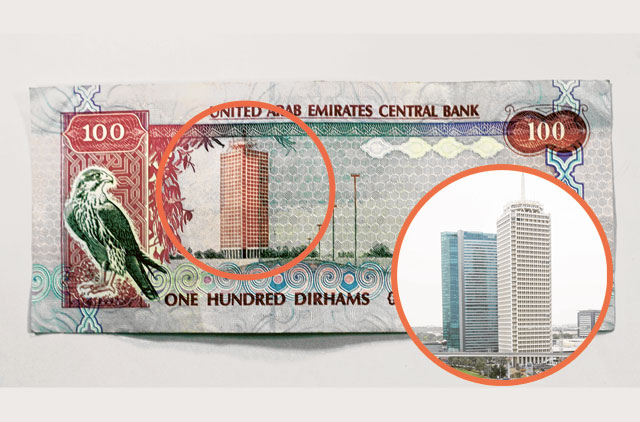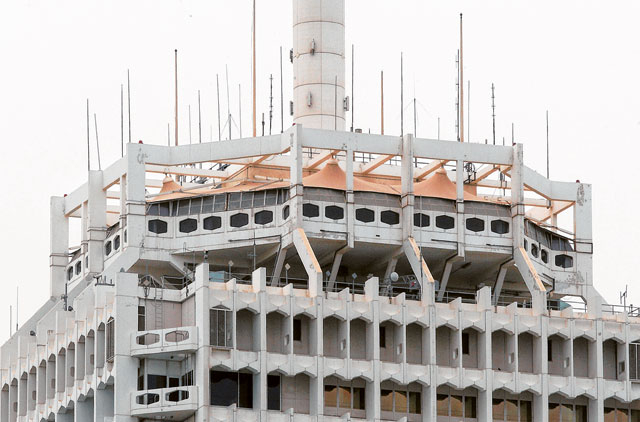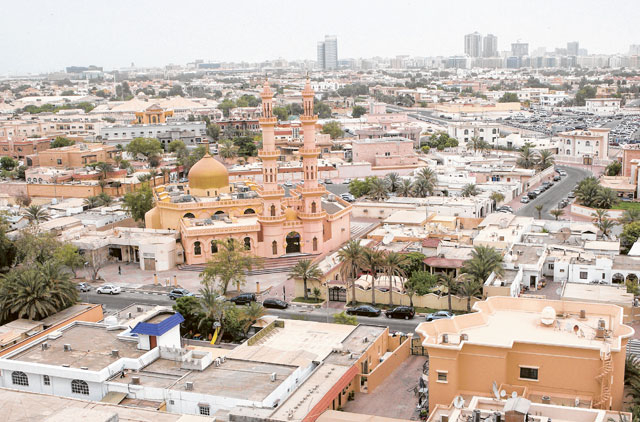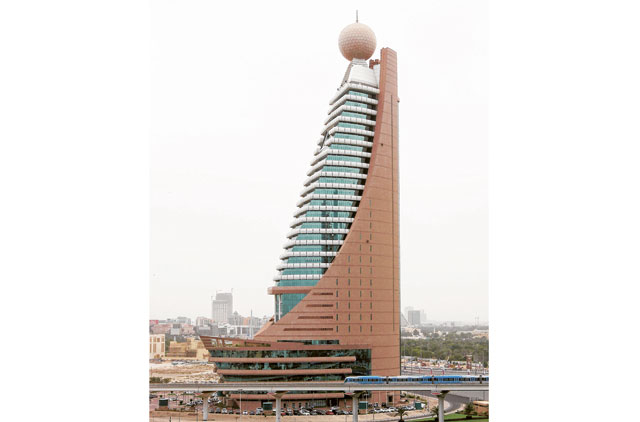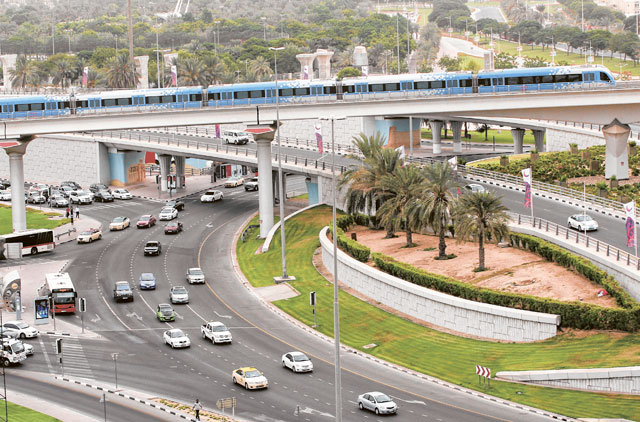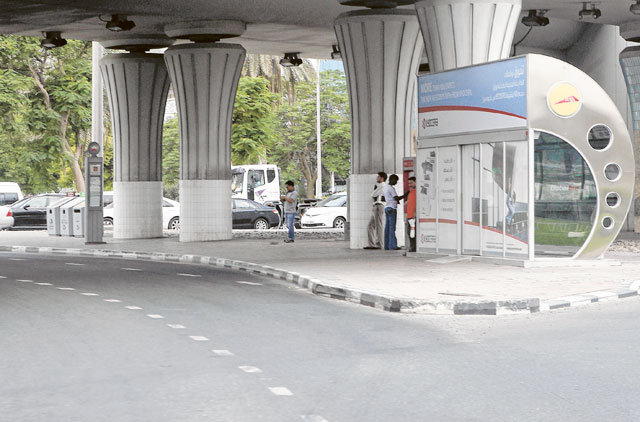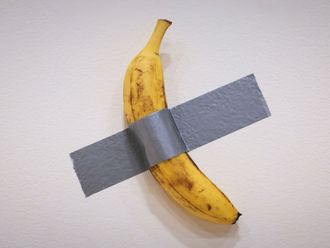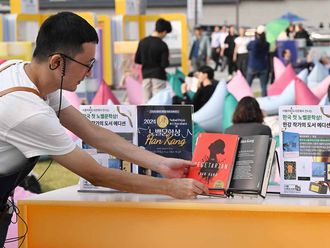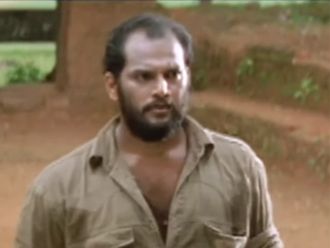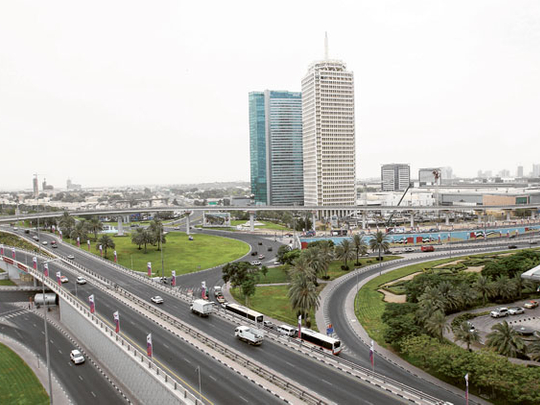
Dubai: When the Trade Centre was launched in the 1970's, many Dubai residents wondered why the giant structure was built in such a faraway sandy patch of Dubai along a single-lane highway. Today, the Trade Centre is arguably the anchor building of the now bustling Shaikh Zayed Road, which has come to define Dubai's skyline with its range of skyscrapers.
Back in 1979, Shaikh Zayed Road was known as Defence Road and was commonly referred to as the Abu Dhabi road as it led to the capital.
Most of what is today Dubai's business district grew around the Trade Centre, and while it has now been replaced by the Burj Khalifa as the nucleus of the district, a drive around the area demonstrates the centrality of the building in the district's planning.
At 39 stories tall, the Trade Centre building may appear modest by today's standards, it was an architectural marvel in the regional context at the time of its opening in 1979.
Business persons, traders and office workers from all around the world bustle through the offices, exhibitions, stock market and the diplomatic missions housed in the Trade Centre. While the Trade Centre has since been dwarfed by its towering neighbours, it continues to play a significant role in every day business of the city, and longtime residents continue to consider it one of the city's most iconic landmarks.
Lean Guisdan, a 30-year-old Filipina working for an exhibition at the Trade Centre said she identified the building as the icon of Dubai as she was growing up in her home country.
"Whenever anyone would speak of Dubai back then one would think of the Trade Centre. That's the first image that came to mind. It was the centre of Dubai back then," she said. "Of course now that image has been replaced by Burj Khalifa, but I think the Trade Centre will remain as a significant symbol of the city."
Guisdan, who moved to Dubai six months ago, said she had heard so much about the Trade Centre while in the Philipines, but never thought she would one day work there.
David Domoney, president of the Arab Lab Group and the first to organise an exhibition at the Trade Centre, wrote in Gulf News in 2009 that he organised the first exhibition in the city too, and that was held in a tent near the creek. The Trade Centre was under construction then, and was referred to as the Shaikh Rashid Tower.
Business hub
The Trade Centre building today hosts the Dubai Financial Market as well as a number of diplomatic missions, including the consulates of Italy, Japan, Spain, Switzerland and Turkey. The US consulate recently moved to a new location. It also has the UAE offices of major international businesses such as Federal Express, General Motors, Johnson & Johnson, MasterCard International, Schlumberger and Sony.
The Trade Centre's multi-purpose exhibition halls have also hosted high-profile and historical events, including royal weddings. They served as the Dubai headquarters for the UAE's first Federal National Council elections.
In 1981, the first Gulf Information Technology Exhibition (Gitex) was organised in Hall 1 — it presently houses the Dubai Financial Market — with 46 exhibitors and 3,038 participants. Gitex now welcomes over 130,000 visitors.
Two years later, Hall 2 was built with a capacity of approximately 1,500.
The Trade Centre can now accommodate more than 6,500 delegates in just one of its multipurpose halls, boasting an annual footfall of a million visitors.
The complex also boasts a 13-storey Convention Tower, two on-site business hotels, and the Dubai International Hotel Apartments, all within walking distance.
Syed Meher Ali, a visitor from Pakistan, 44, said he visited the Trade Centre because he had heard about a perfume exhibition.
"I had heard about the Trade Centre before. I'm visiting Dubai and was told that there is a perfume exhibition here so I decided to come and see," he said.
Rijas Pallirath, an Indian driver for a company that has an office in the Trade Centre, said he had been going back and forth to and from the Trade Centre every week day for the past four years. He said the bustle of different kinds of people at the Trade Centre was refreshing.
"It's good to see so many people coming and going in the Trade Centre, but sometimes it gets too crowded when there is a major exhibition held here. Not only is the Trade Centre packed, but so are the roads," he said.
How I organised the first exhibition: David Domoney
Imagine a European arriving in Dubai in the late ‘70s and trying to promote the idea of an exhibition to a very traditional marketplace. I was successful in my endeavours and duly organised the first ever exhibition in Dubai, which was held in a tent near the Creek.
I then wanted to find another, more versatile location at which I could host a larger event and while standing at the old Dubai Chamber of Commerce Building (which was also next to the Creek) I asked the then executive director if he knew of anything suitable. He pointed to a very tall building under construction — the only building one could see — the Shaikh Rashid Tower (now more commonly referred to as the Trade Centre Tower).
The Trade Centre opened in 1979 and I organised the first exhibition there on Middle East Construction, which coincided with the queen's inauguration of the building. When we held that show, we created a large, domed, permanent tent with iron girders covered with canvas and large ceiling fans to cool the area. Hall One at that time was where the Dubai Financial Market now sits, but for the construction show we required a larger space.
Originally, we used to stage these events in two shifts — the exhibition would begin at 10am and run until 1pm, and then the second shift would run from 5pm until 9pm. This suited the local schedule. As time went by, all exhibitions began to run through the day, starting at around 10am and concluding at around 6 or 7pm.
— The writer is president of the Arab Lab Group and was the first to organise an exhibition at the Trade Centre
Fast facts
- The Trade Centre tower was initially known as the Shaikh Rashid Tower.
- n Thirty-nine stories tall, the tower was the tallest in the Middle East when it was launched.
- Construction began in September 1974 and was completed five years later.
- The Trade Centre was inaugurated by Queen Elizabeth II on February 26, 1979.
- The renowned technology exhibition, the Gulf Information Technology Exhibition (Gitex), was launched at the Trade Centre in 1981 with 46 exhibiters and 3,038 participants. It now welcomes more than 130,000 participants.
- The Trade Centre receives more than a million visitors every year.
- It served as the Dubai headquarters of the Federal National Council's first elections in 2006.
Location
The Trade Centre is located in the Zabeel area of Dubai by the Trade Centre Roundabout. It has exhibition halls and hotels attached to it, including the Novotel hotel.


